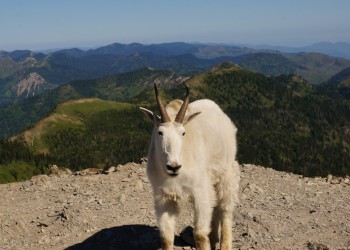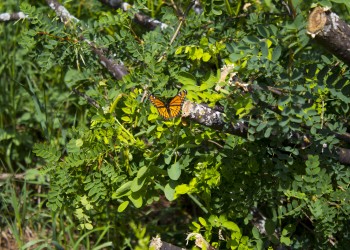Animals and Plants
Effective beginning 6/2/2025: This website, and all linked websites under the control of the agency, is under review and content may change.
NatureServe

Authoritative source of data about plants, animals, and ecological communities of the Western Hemisphere, and directory of network organizations.
Montana Field Guides

These web-based guides on animals, plants, fungi and more are a collaborative effort between the Montana Natural Heritage Program and Montana Fish, Wildlife and Parks.
Montana Natural Heritage Program

The state's source for reliable, objective information and expertise to support stewardship of our native species and habitats, emphasizing those of conservation concern.
Idaho Species Guide

The Idaho Species Diversity Database is the most comprehensive repository for site-specific data on the Gem State’s fish, wildlife, and plant diversity.
North Dakota Species

Profiles of most North Dakota game species, many of the species listed in the state's Species of Conservation Priority program and some other common species found in the state.
Fish
Resident native fisheries include a variety of species. Bull trout is of concern in the Northern Region because of population declines. This species is federally listed as ‘Threatened’ under the Endangered Species Act. In addition to bull trout, several other native fish species populations have declined in the Northern Region, and for this reason they are included on the Northern Region Sensitive Species List.
Westslope cutthroat trout in the South Fork Flathead River, Flathead National Forest.
(USDA Forest Service photo by Photo by Pat Van Eimeren.)Less well-known native fish species in the Northern Region are the Prairie fishes. These include unique, often beautiful, fishes such as the rosyface shiner, Northern redbelly dace and sauger. All native fish species have a high intrinsic value because they evolved in North America and occur only within a limited range.
Declining Native Aquatic Species
Conservation and restoration of salmon, steelhead, bull trout and westslope cutthroat trout and their habitat is of primary emphasis in the Northern Region. For bull trout and westslope cutthroat trout, the threat of non-native fishes (brook trout, lake trout) to population strongholds is a concern. Salmon and steelhead face many survival challenges including migration to and from the ocean to their spawning habitat in the Snake River drainages in Idaho. All these species have suffered declines in their populations due to habitat modifications (e.g. dams and migration barriers at road crossings), introductions of non-native species that compete with them for food and other resources, and genetic introgression (crossbreeding) with introduced or hatchery fish.
Conservation Strategy for Bull Trout on USFS Lands in Western Montana [PDF, 617 pages, 38.3 MB]
The Northern Region houses herpetofauna (amphibians and reptiles) from the Pacific Northwest, the Great Plains, the Rocky Mountains, and the Great Basin.
The native amphibian and reptile species of the Northern Region occupy a diverse array of habitats. Amphibians and aquatic reptiles are long-lived and utilize both aquatic and terrestrial habitats in different stages of their lives.
Amphibians are unique in that much of their respiration (breathing) takes place through their skin. This delicate moist membrane is thus highly permeable to compounds in the environment. Amphibians of particular interest due to their declining populations in the Northern Region include Boreal toad, Coeur d’Alene salamander, Great Plains toad, Northern leopard frog, and Plains spadefoot. All these amphibian species are on the Northern Region Sensitive Species List. Currently there are no aquatic reptiles on the Northern Region Sensitive Species List.
Ranges of many species of amphibians and aquatic reptiles have dramatically declined in the last decade, even in “protected” areas. Many amphibians are considered indicators of environmental quality.
The decline of amphibians, denizens of the riparian zone, is a trend that may indicate serious problems in both aquatic and terrestrial environments. Some known factors of decline of amphibians and aquatic reptiles include habitat loss caused by development and agriculture; being consumed by introduced species, such as bull frogs and trout; disease and parasites; possible effects from global climate change and increased ultraviolet-B radiation, habitat degradation from over grazing livestock, and population fragmentation.





